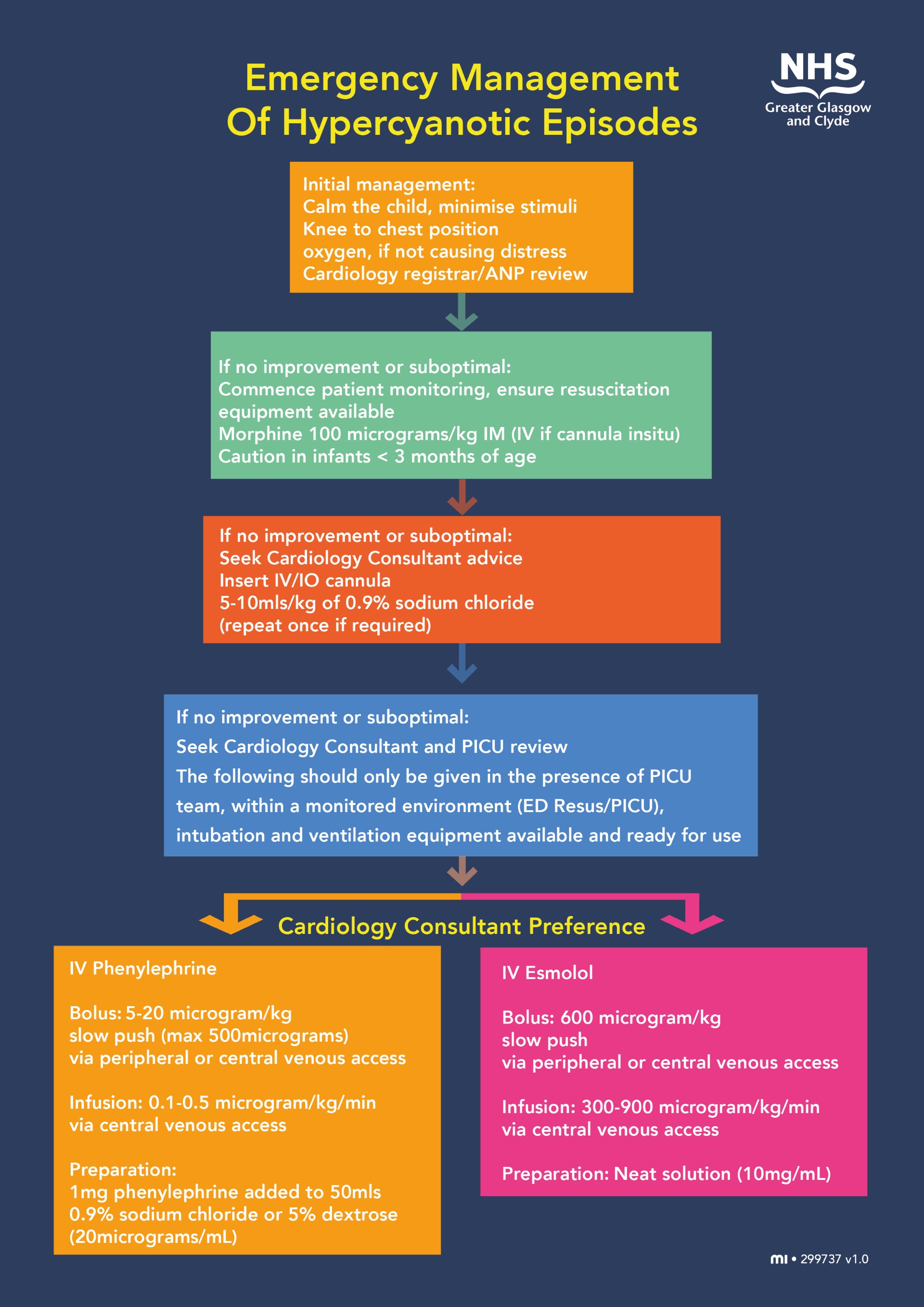Hypercyanotic episodes in tetralogy of fallot
Objectives
To provide a guideline for the recognition and management of paediatric hypercyanotic episodes.
Scope
This guideline is intended for all healthcare professionals involved in the care of paediatric patients with congenital heart disease susceptible to hypercyanotic episodes.
Hypercyanotic episodes or as they are also referred to ‘cyanotic spells’ most frequently occur in young children with Tetralogy of Fallot, but may occur in children with other forms of pulmonary stenosis with ventricular septal defect. Precipitating factors include crying, defecation, feeding, wakening from sleep, dehydration, fever, tachycardia, tachypneoa and events provoking agitation.
They are characterised by:
- Period of uncontrolled crying/panic/irritability
- Rapid and deep breathing
- Increased cyanosis
- Limpness and lethargy
- Reduced murmur intensity
(signifying substantial blood flow reduction across right ventricular outflow tract) - The older child squatting
Hypercyanotic spells require early recognition and management to prevent the development of complications from prolonged hypoxia. Whilst medical intervention may be required, many episodes are self-terminating.
Hypercyanotic episodes are the effect of an acute imbalance between pulmonary and systemic vascular resistance, resulting in an increased right to left blood flow through the ventricular septal defect and consequent attenuation of right ventricular outflow tract obstruction.
Tetralogy of Fallot - Symptoms, diagnosis and treatment | BMJ Best Practice
British National Formulary for Children. September 2017. London: BMJ Group and Pharmaceutical Press.
Evelina London. Paediatric Formulary. July 2015.
Life in the fast lane. Newborn with hypercyanotic episodes. Last updated May 2016.
Park MK (2016). Park’s The Pediatric Cardiology Handbook 5th ed. Philadelphia: Saunders.
Starship Child Health. Clinical Guideline: Tetralogy of Fallot. Last updated February 2010.
Last reviewed: 22 November 2023
Next review: 30 November 2026
Author(s): Alison Buller, Paediatric Cardiology ANP
Version: 5
Approved By: Cardiology Multidisciplinary Team
Document Id: 534


